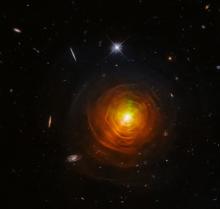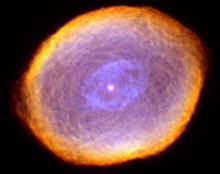Listen to today's episode of StarDate on the web the same day it airs in high-quality streaming audio without any extra ads or announcements. Choose a $8 one-month pass, or listen every day for a year for just $30.
You are here
Stellar Flash
Most stars don’t change much over time scales that we can see. Instead, the changes play out over millions or billions of years. But one star is undergoing dramatic changes over scales of decades. That’s allowing astronomers to watch it evolve in real time.
T Ursae Minoris is in Ursa Minor, the little bear. As night falls, it’s above the Little Dipper
The star is nearing the end of its life. As a result, the nuclear reactions in its core aren’t stable. That causes changes in the star’s outer layers. And those changes create cycles in the star’s brightness.
Until about 40 years ago, it had one main cycle, which lasted a bit more than 10 months. Since then, though, that period has dropped to about six and a half months. And another cycle has emerged. It lasts about three and a half months.
A recent study concluded that the second period showed up thanks to a “helium flash.” A shell of helium around the star’s core suddenly ignited, converting the helium to carbon.
Comparing the two cycles allowed researchers to compile a complete dossier on the star. They found that it was born 1.2 billion years ago. It’s 1.7 times the mass of the Sun, and almost 300 times the Sun’s diameter.
Overall, the star is getting smaller and fainter. But things should turn around in about 50 years, when the star will start getting bigger and brighter. And within a hundred thousand years, it’ll blow away its outer layers, leaving only its dead core – the final phase for a star that’s changing in a hurry.
Script by Damond Benningfield






